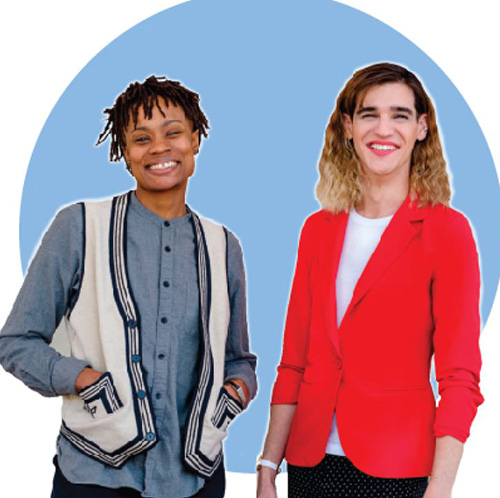- Apply
- Visit
- Request Info
- Give
'Trans 101' workshop gives lesson on 'Transcending Sexpectations'
Written by Molly Boucher
Published on March 31, 2021

The Arthur L. Johnson Unity Wing at Eastern Connecticut State University recently hosted “Transcending Sexpectations,” a workshop centered on understanding intersectionality and LGTBQ+ terminology. Facilitated by educators Maybe Burke and Sean Desiree, the interactive presentation on March 25 allowed students to have a conversation regarding transgender and non-binary experiences.
Referred to as a “Trans 101 workshop” by Burke, students used the interactive website “WooClap” to show how they thought trans students were treated on campus. Asked to answer the question with an emoji, students responded with great uncertainty, many using shrugs or confused faces to illustrate their lack of knowledge. To educate students and keep everyone on the same page, Burke and Desiree spent a portion of the workshop defining terminology. “It’s important for us to be using these terms in the same way,” they explained, before asking students to send in any words they knew, or ones that they have heard of but were unfamiliar with.
Terms that were defined included sex assigned at birth, gender identity and sexual orientation. Desiree made sure to clarify that although these four terms were helpful for gaining a basic understanding, they do not intercept. “They are four different ways we can define and express ourselves.”
The duo then went on to explain more complex terms, including gender identities such as demi gender, agender, non-binary, gender fluid and gender non-conforming. While the definitions overlap at times, some can serve as umbrella terms, such as non-binary, which is anyone who lives outside the expectations of being a man or woman or doesn’t identify exclusively as either. On the other hand, demi gender means someone who is partially rooted in the identity of a certain gender, but not in every aspect. Burke said definitions are evolving every day: “A lot of language has shifted or changed in the past five to 10 years.”
Moving on to intersectionality, the workshop focused on the complexity of someone’s identity, and the privileges that can correspond at times. Burke gave the example of their own identities, explaining that outside of being a trans woman, they experience a lot of privilege due to being white. “Trans women of color are targeted the most across the board,” said Burke.
Showing an excerpt from a Laverne Cox interview, Desiree and Burke highlighted some of the identifiers included in intersectionality, including gender, race, ethnicity, sexual orientation, gender identity, disability and class. They also said that with each added identifier, each experience becomes more and more unique.
To end the workshop, Burke and Desiree went back to the WooClap app, where there was a chart with four sides stating four different gender identifiers: Man, agender/genderless, woman and genderfluid/genderqueer. Students were then asked to pin themselves where they identified. Students were able to go anywhere on the chart, including in between any of the four labels. It was then explained that although this is how they identified today, they don’t have to stick to it. Desiree and Burke then reminded students to see how they can be supportive to trans students on Eastern’s campus, closing out by saying, “We don’t need to understand a person’s experience in order to just call them by their name and pronouns.”


